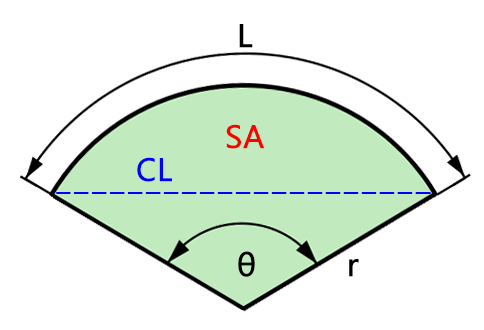Arc Angle Calculator
Input the radius of a sector and choose one parameter (arc length, chord length, or area) to calculate the central angle (output available in degrees or radians).
Calculate the Central Angle of a Sector

Degrees
Radians
What Is a Central Angle?
A central angle is the angle formed at the center of a circle, describing the size of the sector. With a known radius \( r \) and either arc length, chord length, or area, the central angle \( \theta \) can be calculated.
How to Calculate the Central Angle
1. Given Arc Length \( L \):
For Degrees: \( \theta = \frac{360 \times L}{2 \pi r} \) For Radians: \( \theta = \frac{L}{r} \)
2. Given Chord Length \( c \):
Rearrange the chord length formula: \( \theta = 2 \times \arcsin\left(\frac{c}{2r}\right) \) To convert radians to degrees: \( \theta_{\text{degrees}} = \theta_{\text{radians}} \times \frac{180}{\pi} \)
3. Given Area \( A \):
For Degrees: \( \theta = \frac{360 \times A}{\pi r^2} \) For Radians: \( \theta = \frac{2A}{r^2} \)
Examples
Example 1: Given the Radius \( r = 8 \) and Arc length \( L = 12 \), find the Central angle \( \theta \).
Solution:
Calculate the angle in degrees:
\( \theta = \frac{360 \times 12}{2 \pi \times 8} \approx 85.94^\circ \)
Result: Central angle \( \theta \approx 85.94^\circ \)
Example 2: Given the Radius \( r = 10 \) and Sector area \( A = 40 \), find the Central angle \( \theta \).
Solution:
Calculate the angle in radians:
\( \theta = \frac{2 \times 40}{10^2} = 0.8 \) radians
Result: Central angle \( \theta = 0.8 \, \text{radians} \)